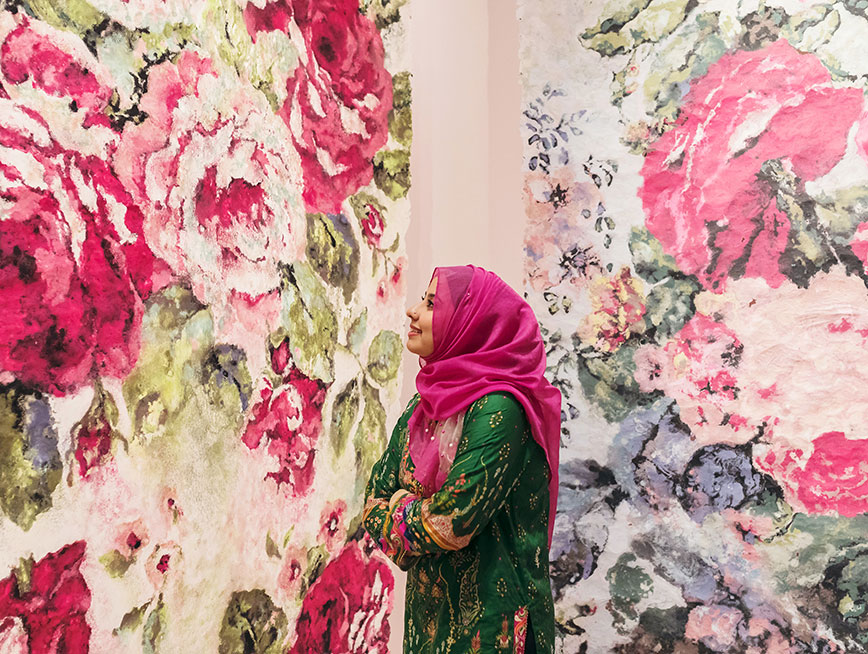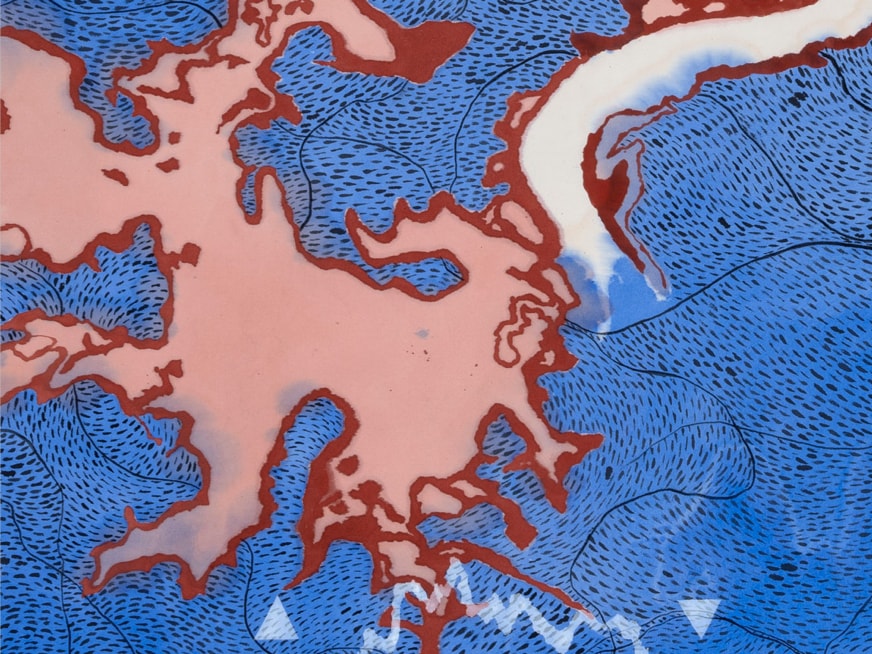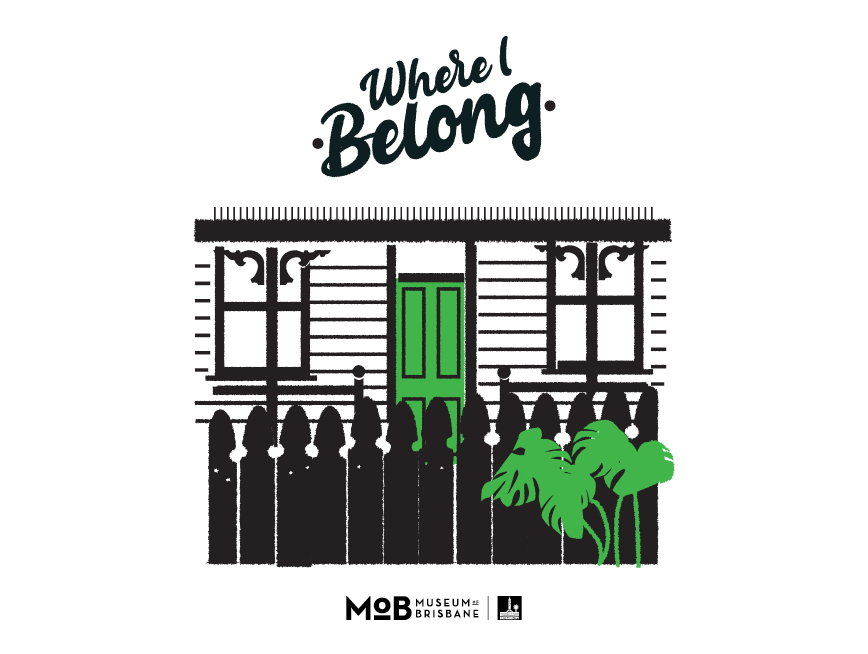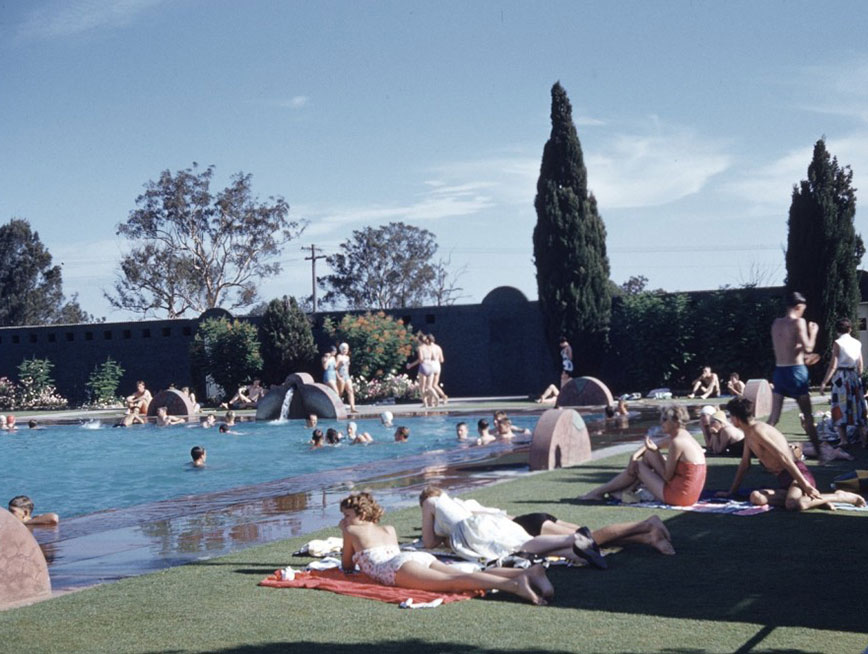In demand as a leading musician and concertmaster, Brendan Joyce has played stages all over Australia and in the United States. He is the Artistic Director and Leader of Camerata – Queensland’s Chamber Orchestra, who are carrying out a four-week residency at Museum of Brisbane, culminating in performances of an original score inspired by the City in the Sun exhibition on Saturday 28 August. MoB picked his brain on the processes behind Camerata’s increasing success, and life as a performer today.
How long have you been performing with Camerata and how have your experiences with the chamber orchestra contributed to your broader musical career?
I’ve been with Camerata in its current form as a professional chamber orchestra since 2005 when I was invited by the Founder to become its Leader. However, I joined as a high-level student in an earlier existence of the ensemble and played while I was a university student and emerging artist. From 2014, as part of the company’s growth, I was formally given the title of Artistic Director.
In so many ways, Camerata has and continues to teach and inspire me. The early version of the group, in particular, was all about fostering our love of music and holding onto that for dear life. We are an unconducted chamber orchestra, so everyone – myself included – has to ‘own’ what we are doing, contribute to it, come up with the ideas, foster it, nurture it and keep it thriving. We don’t have a conductor or music director to whip us into shape and I don’t see that as my role either. People are here because they want to be here. This means that I’ve been able to hone my skills as an orchestral leader, chamber musician and in artistic direction. The link between that and the professional experiences I have and continue to have is absolutely tangible. Basically, I have a career because of Camerata. Its founding ideals were so pure, exceptional even, and at least some of those continue to inform our intentions, so Camerata is an incredibly special and delicate flower, “a treasure of an ensemble” as somebody once put it, and something I am so privileged to be part of.
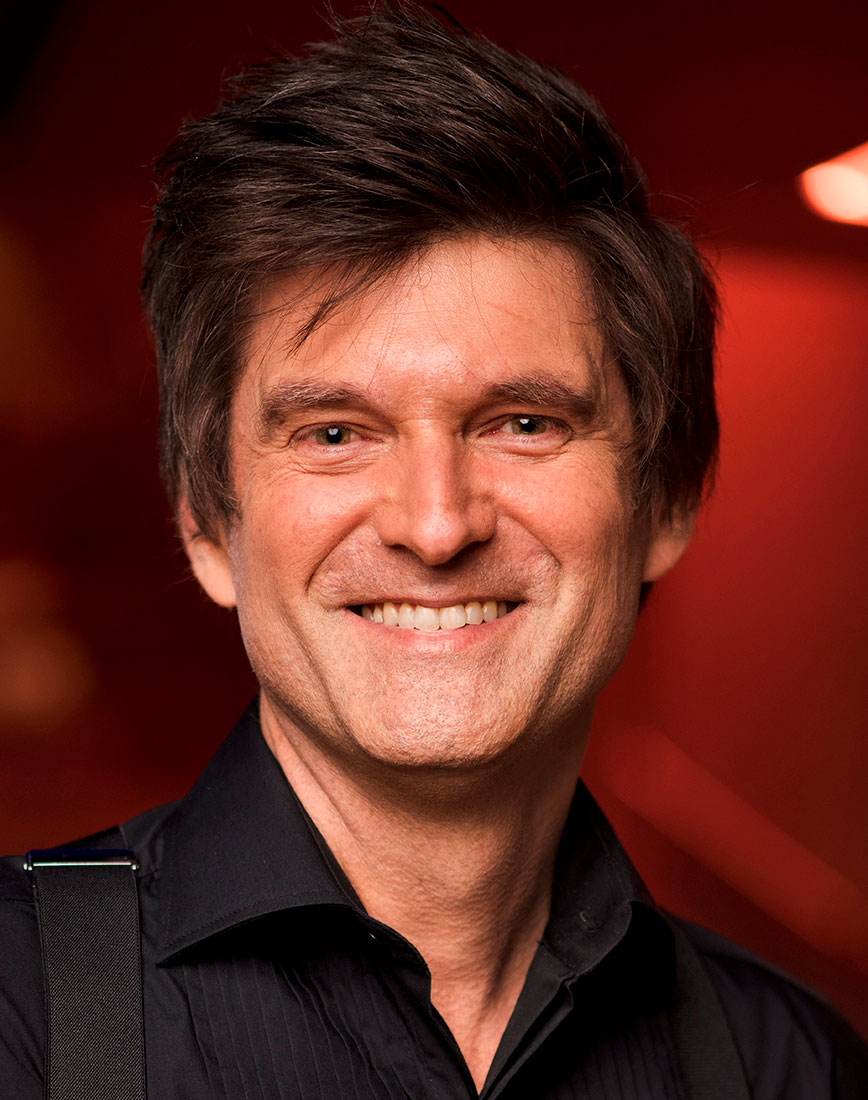
What does your role as Artistic Director look like on a day-to-day basis and what is it like to lead such a collaborative and innovative group?
The day-to-day job is pretty mad actually, and especially through the current precarious climate where concerts get changed, postponed or cancelled. I have to mark out time to keep on top of my playing. Somebody once described the violin as “a jealous mistress” of instruments, meaning that if you aren’t paying attention to it daily, then things definitely go awry and your playing loses refinement, quality and adaptability. So, a very big challenge is juggling between all the seemingly daily emergencies in an admin team of four and a half people and keeping my playing in its best condition, while also trying to dream up programs for the future and interpret the music that we are working on.
I do love how collaborative my role is. I suppose, in a way, the Founder established Camerata with an emphasis on empowering the musicians, and as the administration team has come on board over the decades, that ideal has filtered through so that the team continues to work collectively and jointly on all projects. People often ask us how we do it all: the concerts, the tours, the residencies, the back-up orchestra gigs and the pit seasons for ballet companies. Well, it’s really only because of the dedication of both the performing and admin teams, and people jumping in and going the extra mile to make things work.
I think there has always been a degree of chaos allowed too. Simon Sinek says that “an excessive drive for order interrupts the beautiful chaos needed for creativity to thrive”. Well, that is certainly both true and a constant challenge as arts companies have to be both an arts company and a business at the same time. But I think we keep a healthy degree of chaos there so that we can suddenly change or be responsive. This is an exciting aspect of Camerata for me.
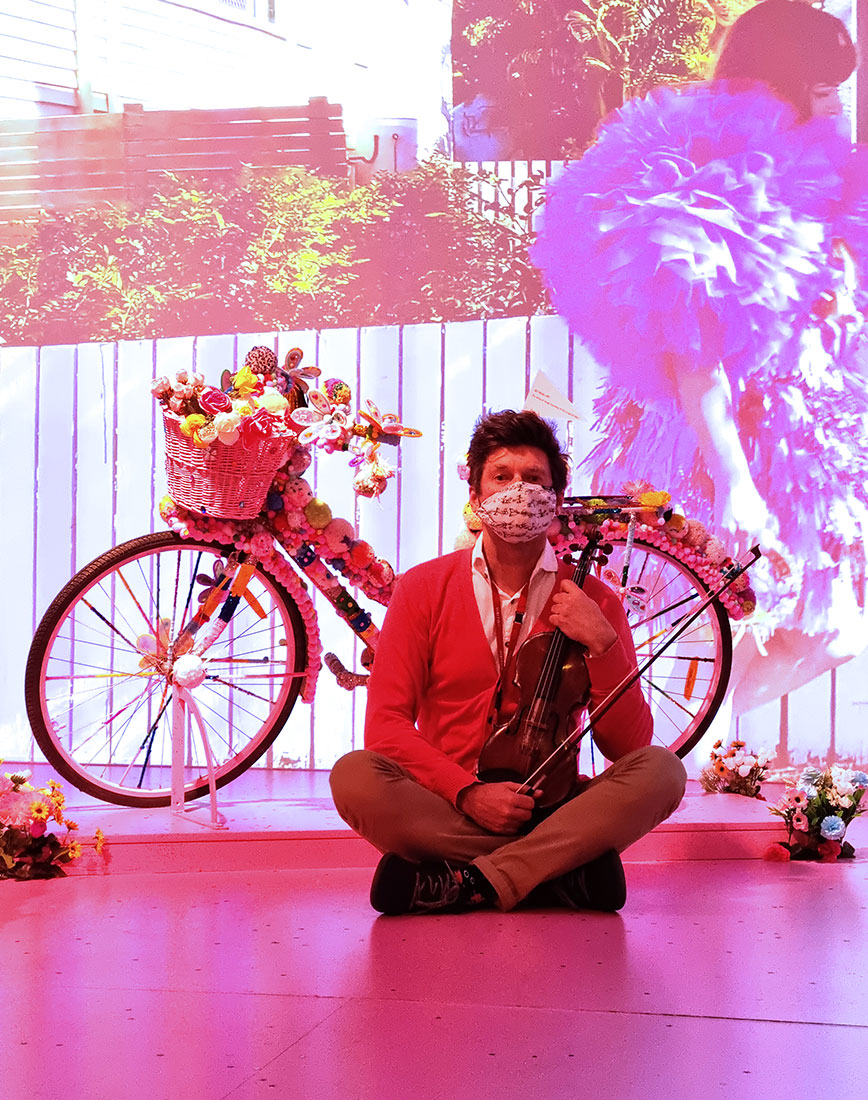
How is the group preparing for the performances in the Museum at the end of the four-week residency and do plans ever change when you’re in the space?

Are there any particular stories or pieces from the City in the Sun exhibition that have been leading influences in the ensemble’s musical play and composition?
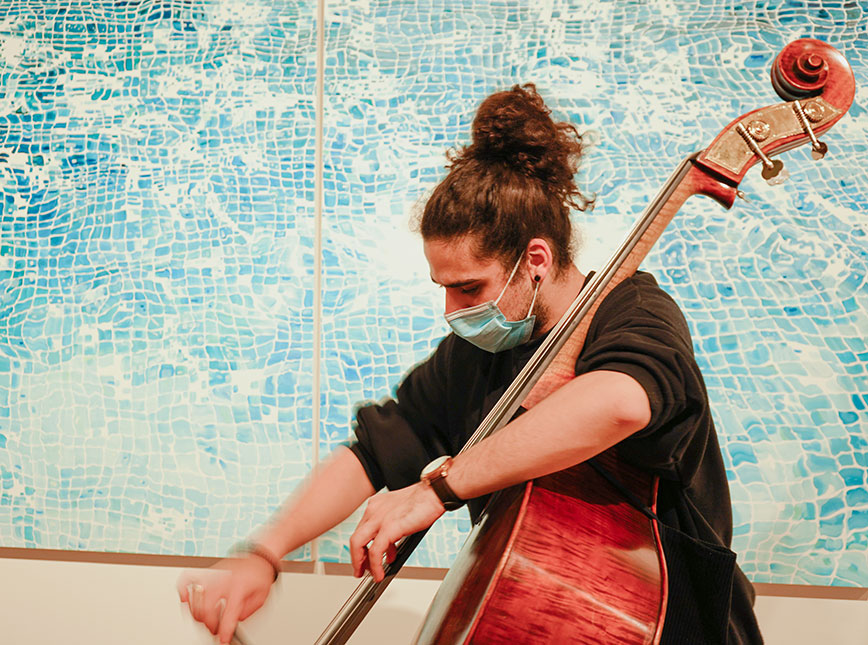
Can you describe the collaboration process? How does the group of eight musicians work together? Is this process of collaboration something Camerata does often?
I have to say that I’m really grateful to Museum of Brisbane for throwing us into this baptism of fire. Classical music has been divided up over time into the composers and the performers, whereas once upon a time the two were fairly inseparable. Beethoven for instance was a great performer as well as composer, and a brilliant improvisor too. So, Camerata having to find ways of responding through music forces us all into both a creative and curating sort of space and that is incredibly challenging and richly rewarding.
We’ve set it up this time so that we overlap in pairs in the gallery, to see if we can have more time to bounce off one another. We also wander the gallery with our instruments, so visitors are talking to us about what we are doing – that brings some great ideas and insights. We are in communication through the usual channels, but we are also keeping a Google doc going where people can throw around ideas or simply let us all know where we are all up to. And in our work room we are keeping a corkboard wall of ideas as they come. In the end we have just one rehearsal to piece the show together and decide whether it’s eight individual performances or a through-composed work. I think it’s likely to be the former for this one, whereas our previous residency for Museum of Brisbane exhibition Life in Irons lent itself more to a through-composed work linking all the performances together into one whole. I’m not sure. That’s what I mean about chaos – we are keeping enough of it there so that new ideas might emerge, even at the last minute. It keeps us on our toes!
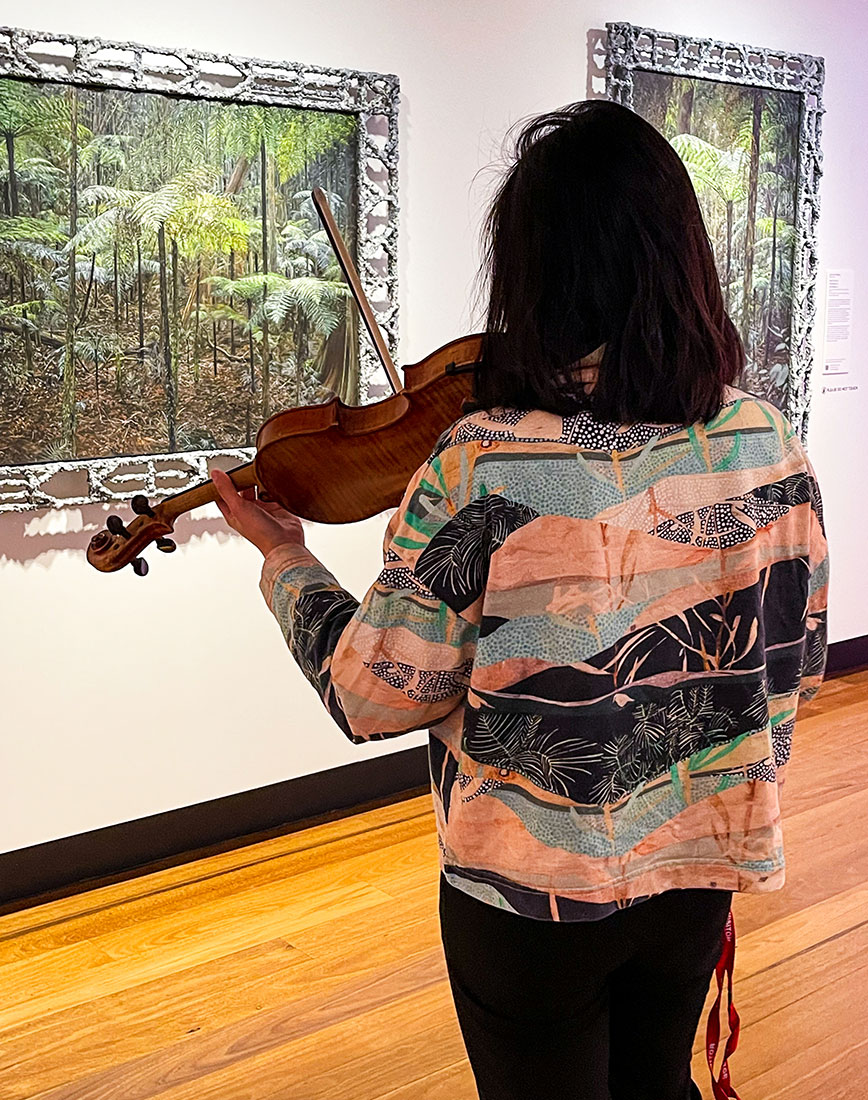
Life in the performing arts has changed significantly in the last few years, how has Camerata tackled these challenges?
Camerata is a well set up organisation, well managed and governed, and it has a team of dedicated, committed musicians. So, all those things mean that we are able to adjust and adapt. We are also open to innovation and the culture is one where anything is possible. We want things to work. As a result, we’ve been able to tackle all the change, especially over the last 18 months. I’m not going to pretend that has not been exhausting and challenging, but I will say that I am so glad I have been with Camerata for that time – there are other places of endeavour that would have been much tougher environments to be in through such unfathomable change. I also think the world needs Camerata and other music and arts groups at the moment, and museums for that matter. Look at how everyone runs to music and the arts and to culture when life becomes tough. Nobody can deny it.
What’s next for Camerata?
Camerata has fast become one of the busiest chamber music ensembles in Australia. We’ve just come out of a time where we toured Western Queensland with the assistance of the Tim Fairfax Family Foundation and Arts Queensland, played for Opera Queensland’s Festival of Outback Opera, gave two major subscription series concerts where we had last minute changes to soloists because of interstate lockdowns, submitted epic grant applications, ran two recital series and performed for the Ipswich Spark Festival. So, frankly I wouldn’t mind a week at the beach! But, no rest for the wicked, Brisbane Festival is just around the corner including our performance of The Conference of the Birds on 10 September, which tells an allegorical story of humankind’s search for meaning through stunning images by Peter Sis and music by Lembit Beecher. We’ll also be performing in Street Serenades and for Bunghul.
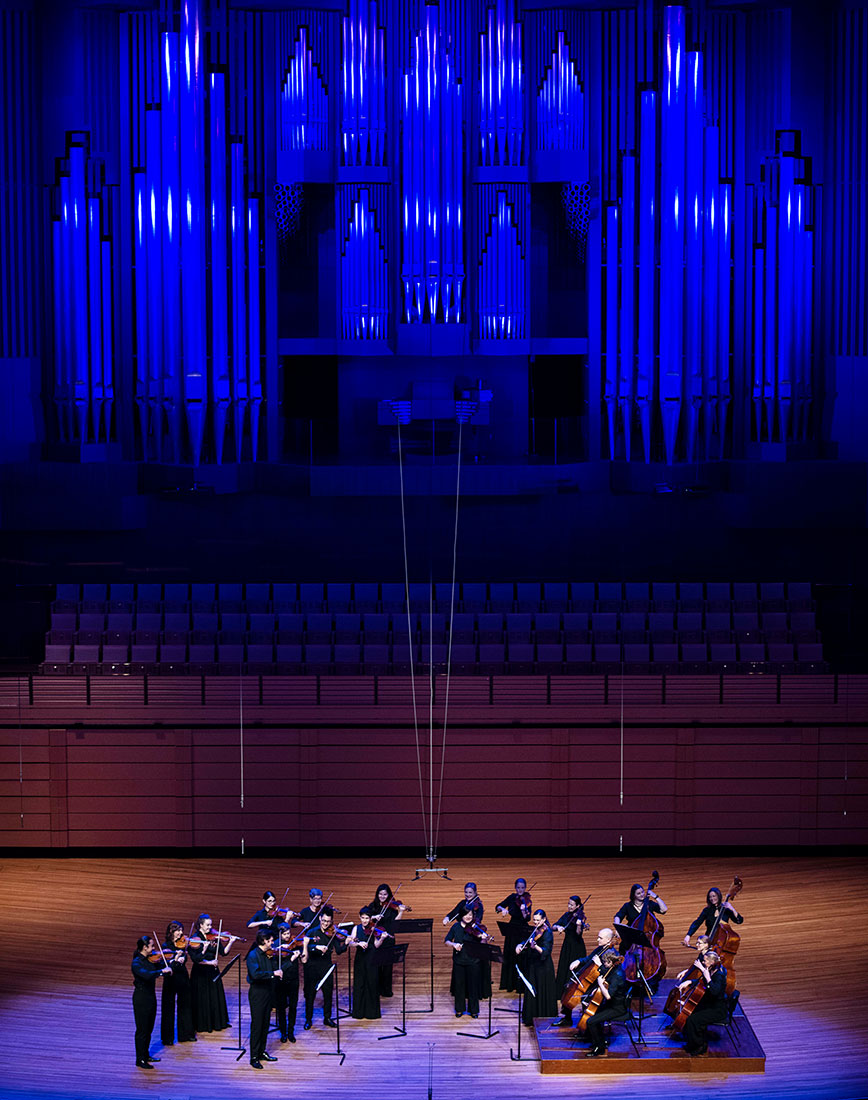
Catch Camerata’s pop-up performances inspired by City in the Sun at Museum of Brisbane on Saturday 28 August at 10:30am, 11:30am and 12:30pm.

